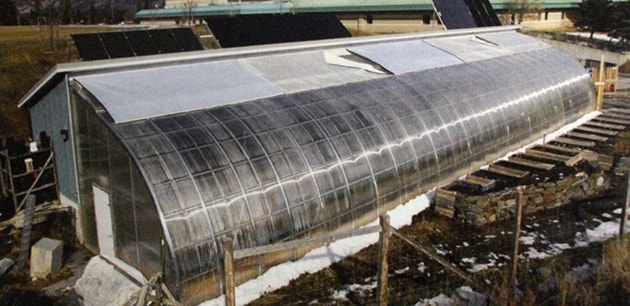Whether a dedicated greenhouse is feasible for Vanderhoof’s high school was the focus of a new post-secondary course this fall.
On Dec. 5 at Nechako Valley Secondary, twelve students from the University of Northern British Columbia presented to community champions an initial feasibility study of running a community greenhouse on the high school grounds.
A brainchild of NVSS principal Ken Young — with a dream location on the school’s roof — the greenhouse is a follow-up on similar existing programs in Vanderhoof’s elementary schools for hands-on learning and growing one’s own food, said Darren Carpenter, career programs coordinator of School District 91.
With support from the District of Vanderhoof, UNBC’s research, sustainability department, and faculty were approached and the idea became a interdisciplinary course for geography, engineering, and environmental science students.
“There are no lectures, just guest speakers and experts, and it’s a job where they need to meet with people, sharing ideas and discussing some.” said UNBC professor Bill McGill of the ecosystem science management program.
“It’s a one-of-a-kind project, having detailed research and hands-on learning, and is funded by UNBC’s Undergraduate Experiential Service Learning program,” said Sagar Saxena, SD 91’s community engagement and partnerships officer and previous research project officer of UNBC. “We hope to have more UNBC projects.”
Next steps for the project will be discussed by the school district, District of Vanderhoof, and UNBC, Carpenter said.
What does a potential year-round greenhouse for NVSS look like?
Style:
A Chinese-style solar greenhouse designed to minimize heating requirements is what UNBC students are proposing for Vanderhoof’s high school.
Located along the south wall of the school’s automotive shop, the annualized geo-solar greenhouse has insulated north, east, and west walls for minimizing heat loss and trapping summer underground for winter release. A biomass boiler can help to provide supplemental heating during the winter months.
In B.C., a similarly designed greenhouse currently exist in Invermere, where the annualized heating enable season extension but not year-round production. The model was also found to be feasible by the University of Manitoba, with a suggestion to use a thermal blanket at night to address potential issues with snow removal and insulation.
Polycarbonate glazing is recommended to help diffuse light and protect plants from over exposure, and plasma lighting to provide high-strength, full-spectrum heat.
Irrigation:
Hand watering as the main system will help students learn how to interact with crops and save energy as well.
Drip irrigation can be employed for less accessible plants like hanging baskets, and rainwater harvesting can help students learn about the ecological cycle of water.
Education:
The greenhouse can be incorporated into the current curriculum or the subject of new dedicated standalone elective courses.
For applied skills such as carpentry or culinary arts, students can work on projects like making planting beds or using the produce to supply a salad bar for the school.
For science and business, the greenhouse can be hands-on modules for biology and chemistry course on soil and its relation to crop success, as well as financial and planning studies for sustainable resource management. For fine arts, the greenhouse can be a venue of expression as well as inspiration for visual and performing arts.
As standalone courses, keeping in mind that Vanderhoof is an agricultural community, a basic course on planting and harvesting can be targeted to lower grades, while senior students can engage in individual projects on greenhouse technology, management, and alternative planting.
As crop cycles may overlap the structure of a school year, overlap between semesters will allow students to plant and harvest a variety of crops.
Operation:
An external group to manage the greenhouse is recommended for the long-term sustainability of the NVSS greenhouse, as well as a designated greenhouse manager to maintain the facility and coordinate scheduling among classes.
Annual operating costs, including the hiring of a full-time employee, are estimated to total $63,840 a year.
Initial construction costs, according to price quote from BC Greenhouse Builders, is estimated at about $200,000.
